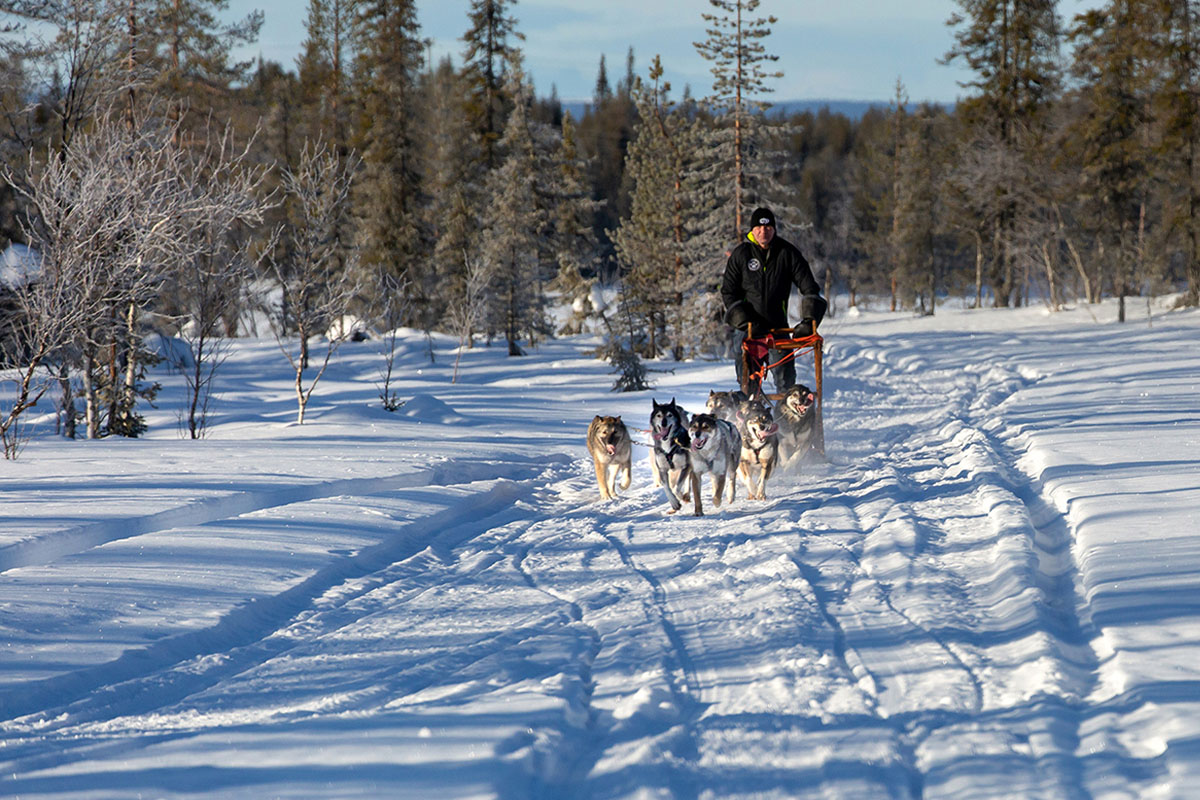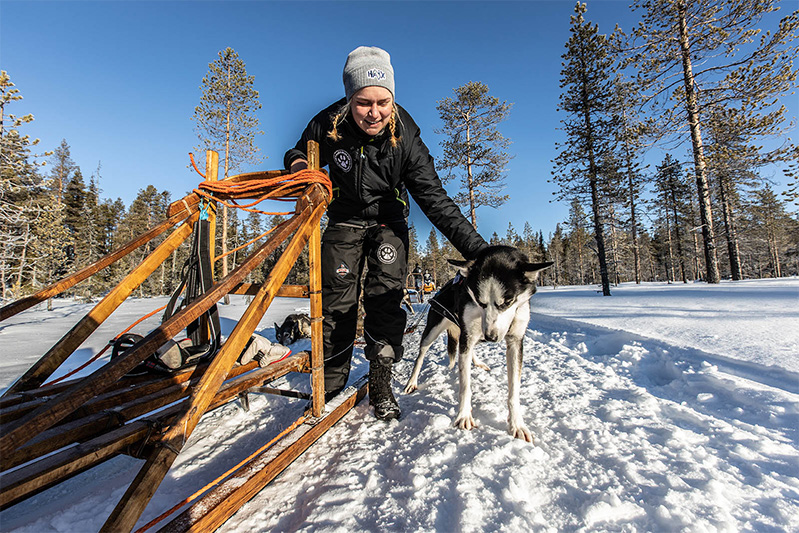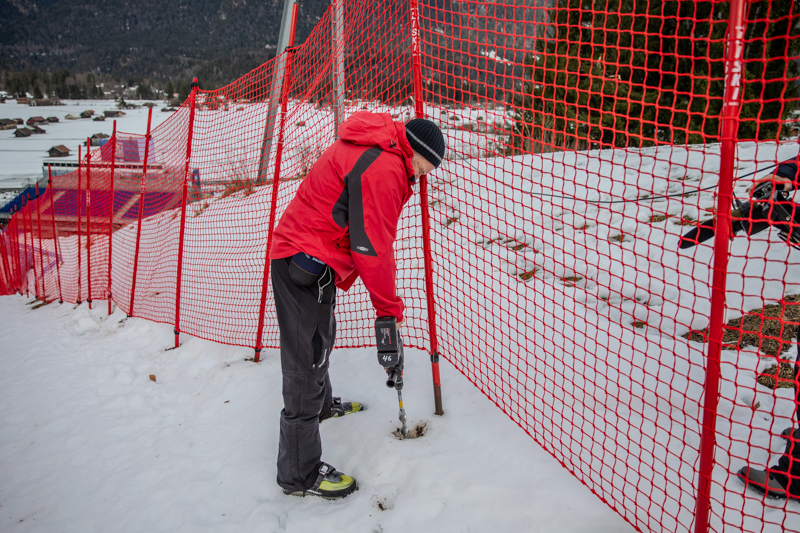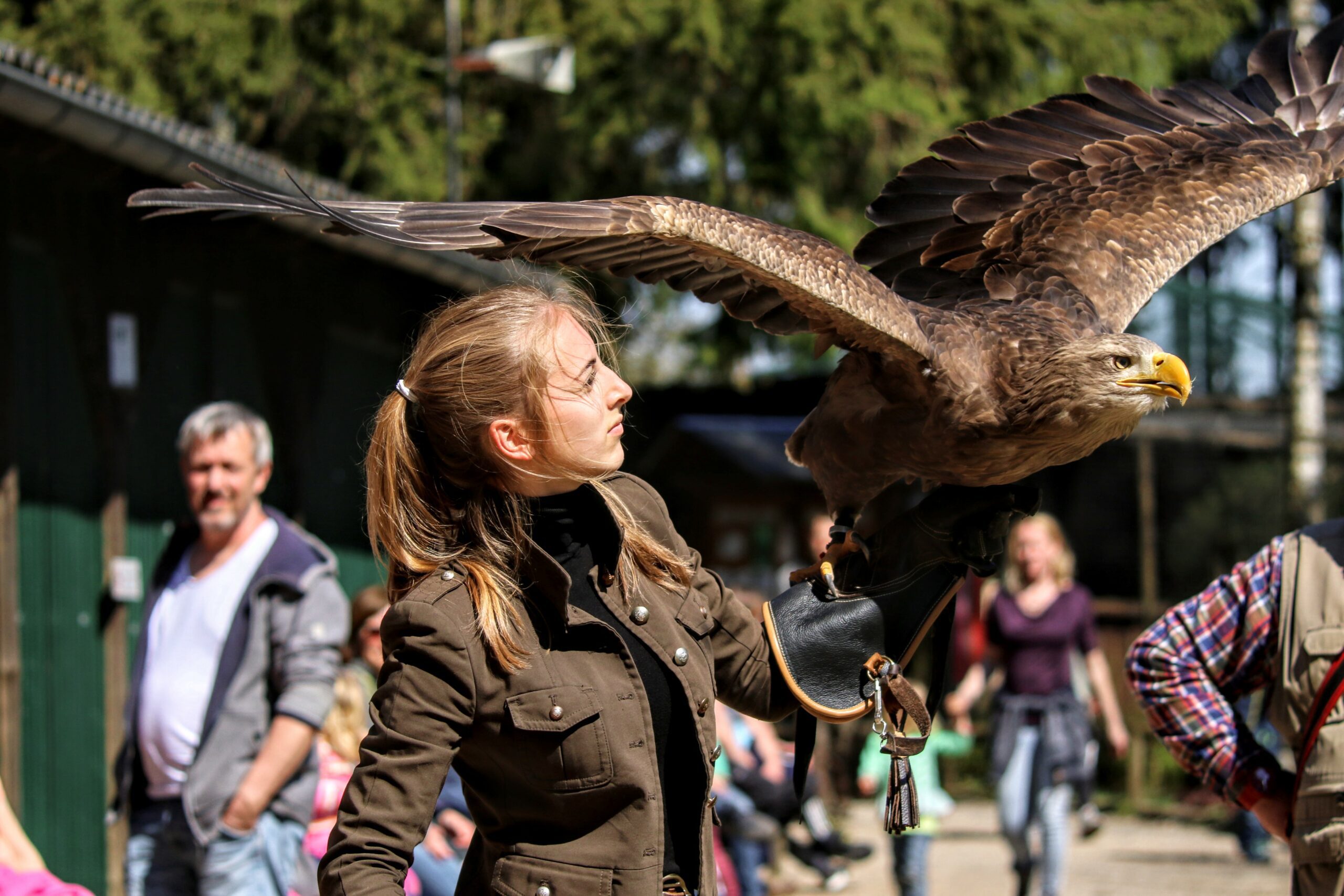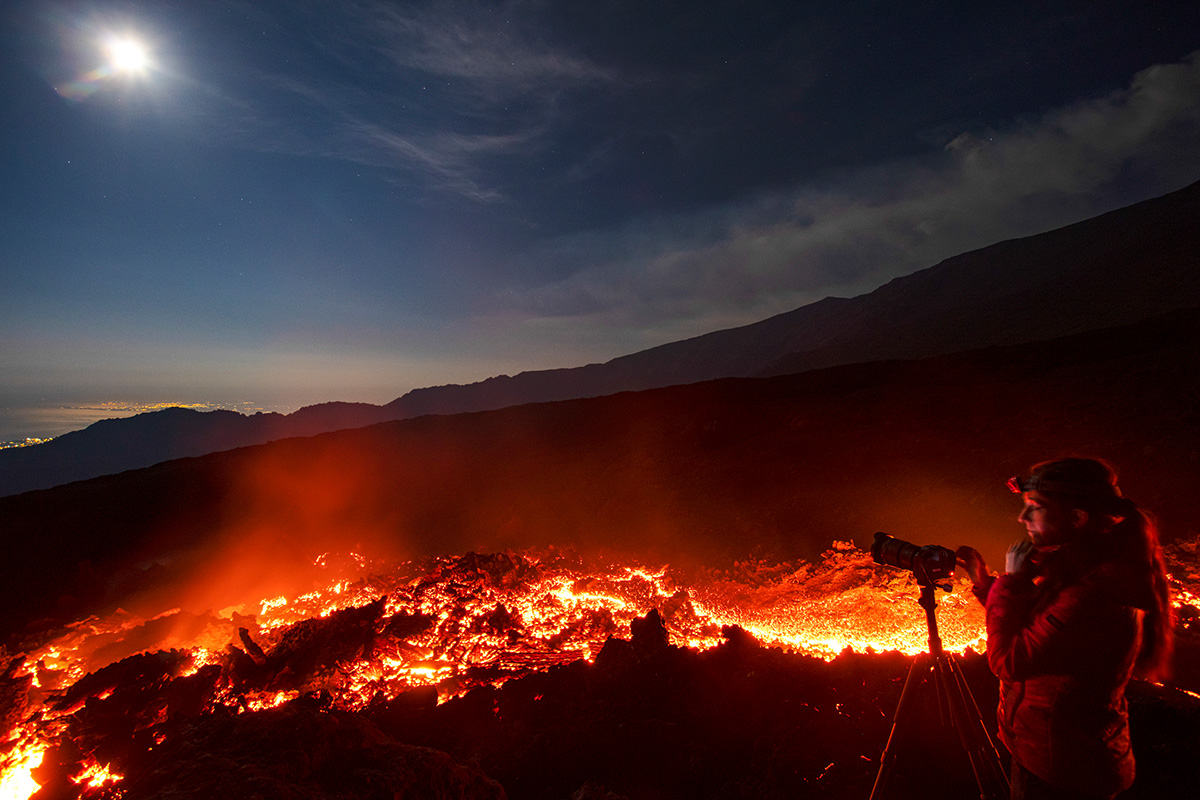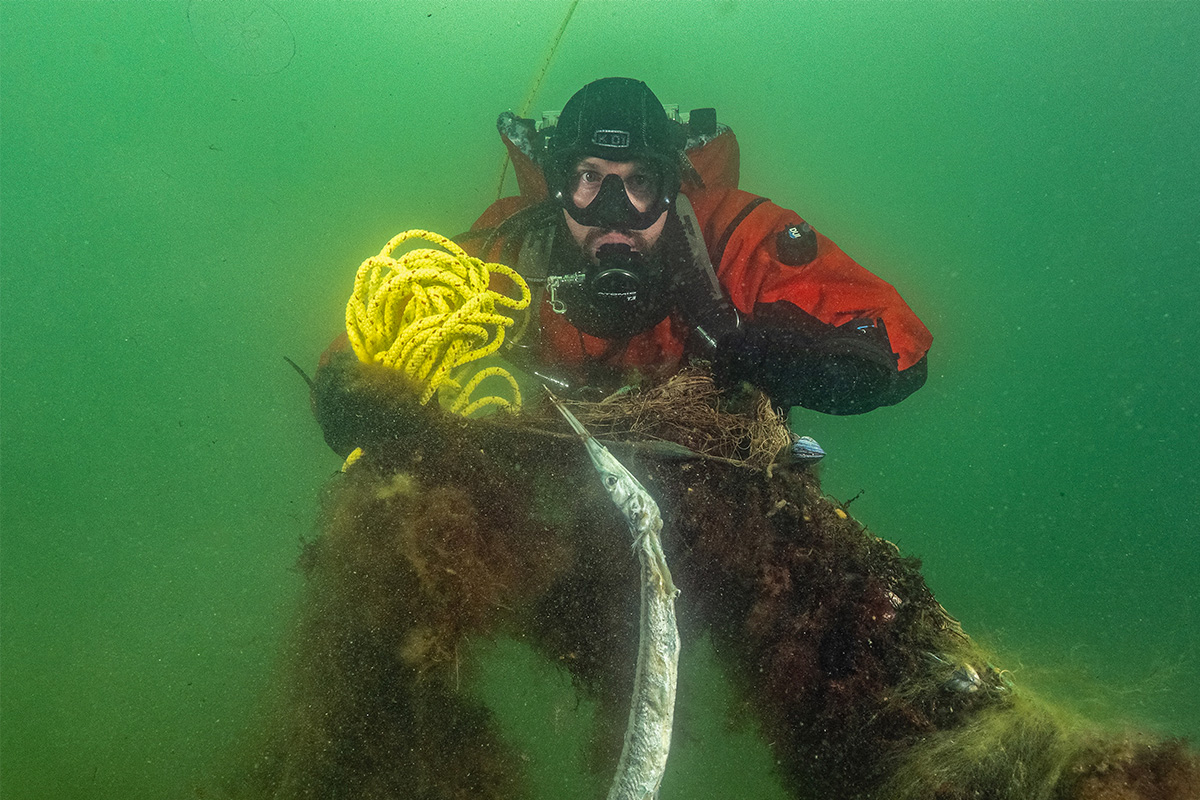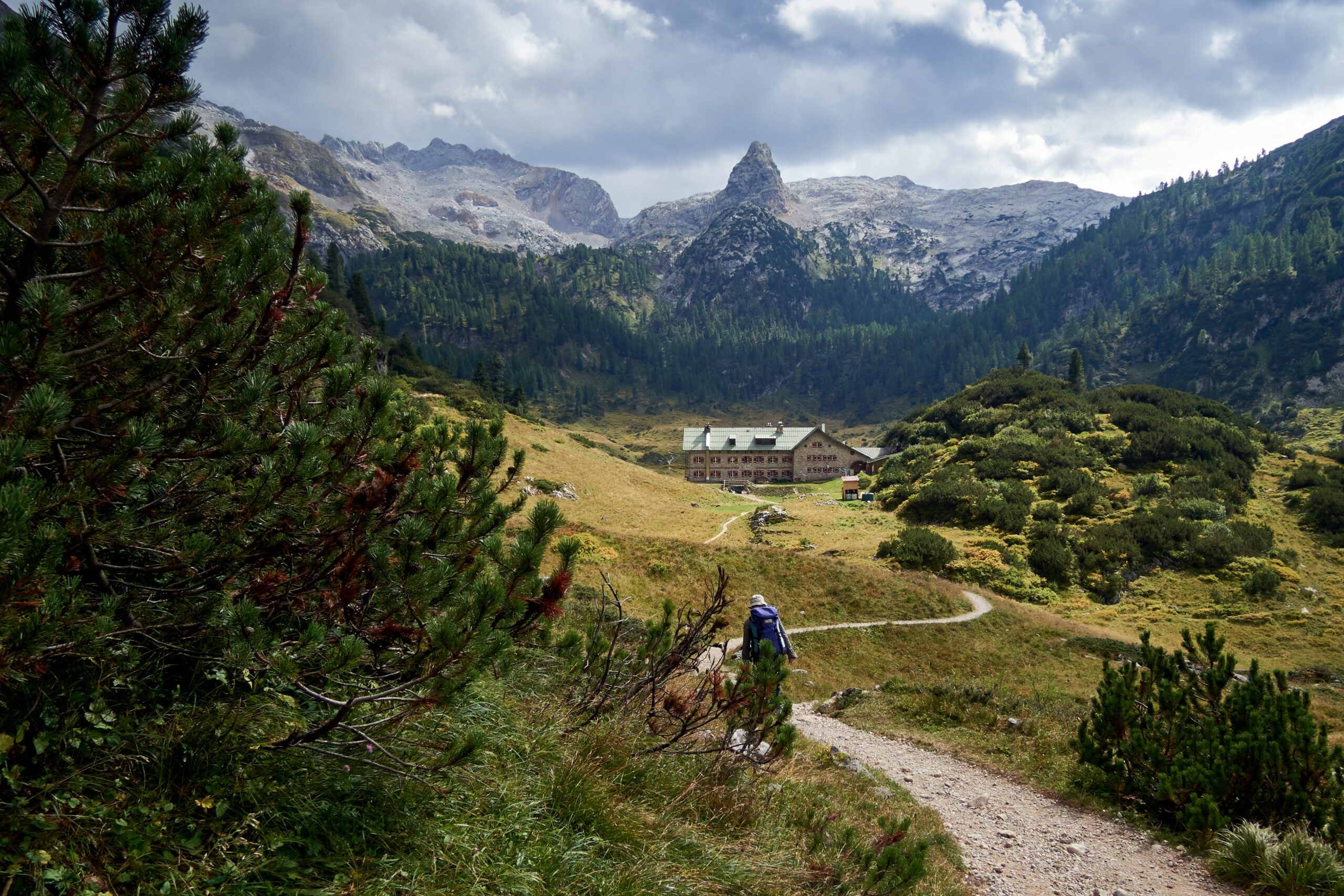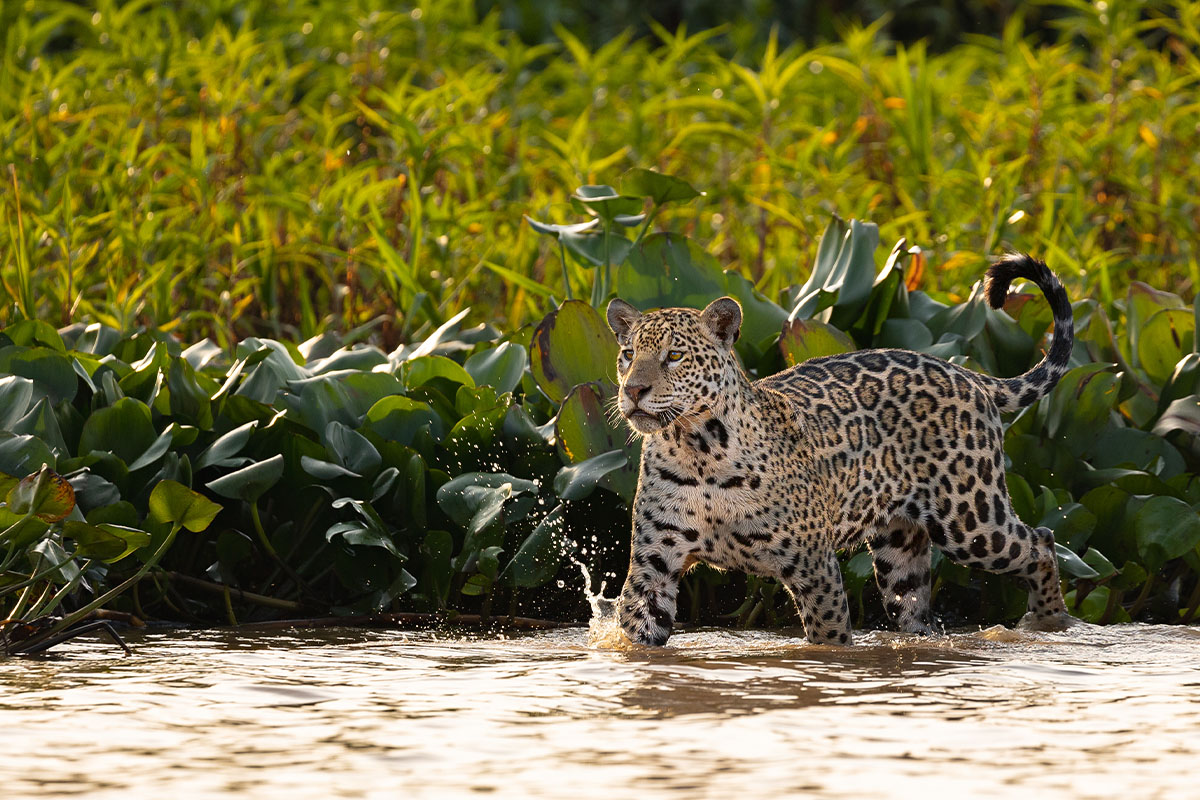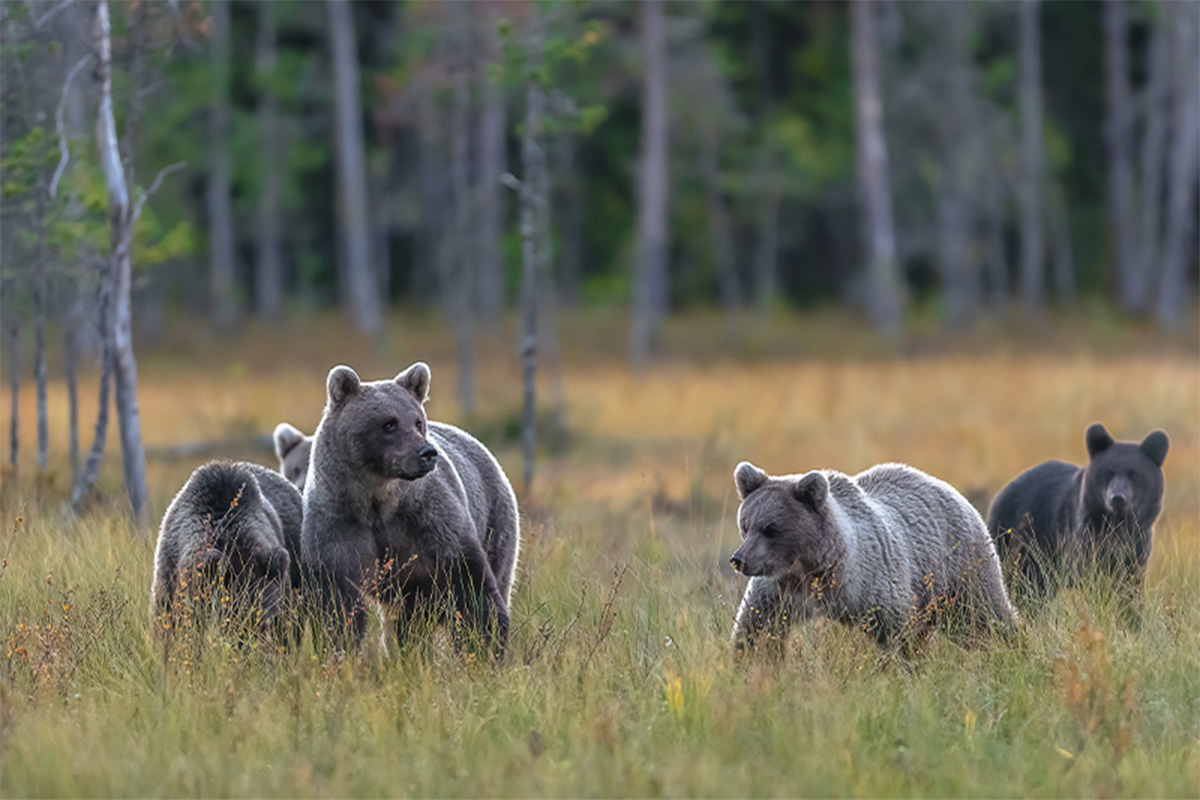Husky trail in Lapland
Arctic landscapes, vast expanses and countless huskies. Jussi Pietikäinnen’s Harriniva Safari in Muonio lies around 200 kilometers north of the Arctic Circle. If you stumble upon the kennels of the 430 sled dogs, you’ll find that the tranquility of Lapland is soon interrupted.
The sun is still lying low in the far north. The dogs’ breath is visible against the sunlight. As if the ice-cold air is steaming. Everything is moving. From tail to nose. From the paws to the ears. Nuuk, the young lead husky, pants in staccato – it feels like 300 times a minute. He stands impatiently on his hind legs in his harness, yelping, whining and tugging on his leash. The energy he has before beginning can hardly be controlled. The same goes for the six huskies in tandem behind him that Suvi is just about to put in the harness. “The two directly by the sled are the strongest. In the middle, you have the racers – and there’s nothing the dogs love more than running,” explains the 27-year-old Finn. She’s worked at Harriniva for many years. “The whole season from September to April.” Of the 430 huskies in the camp, she knows half by name. “It’s the best job in the world,” she says, laughing behind her blond braids and explaining her dislike for the summer months. That’s when she goes to Helsinki. “Looking for a job to get through the warm season.” Until the new husky season begins at the end of September. Then she’s sure to be back with Jussi, manager at Harriniva, along with Nuuk, Tsahkal, Tandor, Trixie and the many new, young huskies that will join them over the following months.
Finland in winter. Muonio is located 200 kilometers north of the Arctic Circle. The thermometer reads -8°C (17.6°F). Much warmer than expected, actually. “Last week, it was negative 37°C (98.6° F),” says Jussi. Then came a temperature spike to 4°C (39.2°F). “A temperature difference of 41°( (105.8° F) within just 12 hours.” This was “pretty intense” and unexpected, even for the junior manager of the outdoor and safari lodge.
Jussi Pietikäinnen’s grandfather arrived in this wilderness at the beginning of the 1970s and laid the foundations for one of the largest outdoor wilderness resorts in northern Finland. “One tent, no electricity, no running water apart from the raging river that flows directly past the hotel,” describes Jussi. A Swedish flag waves on the other bank. Nothing but lakes and forests for miles.
The tent became a camping ground and popular meeting point for nature lovers. In the 1990s, Jussi’s father, Köppi, built the first hotel accommodation. “Welcome,” greets the senior manager from his hotel’s wooden bar. He’s a quintissential Finn: striking face, captivating cheerfulness. His right hand is missing the two smallest fingers, though takes nothing away from his handshake, which has all the power of a lumberjack’s grip.
Today, six completely different accommodations and lodges offer 480 beds across the massive grounds. In 2002, Köppi built the ice palace – an igloo made of thick ice walls, which he’s reconstructed every year since. Inside, sculptures decorate the walls. At the ice bar, the melted edges of cups attest to hot drinks on cold nights. The reindeer farm lies beyond the next forest. Half an hour away is the Wilderness Hotel, which can only be reached by snowmobile – or with huskies.
“The dog sled driver’s best friend is the brake,” says Suvi. “Keep the tug line taut, and when the huskies run, let them run.” The training for mushers – as dog sled drivers are called – lasts just five minutes. That seems like no time at all to the person learning, but it’s a lifetime for the dogs. All the while, their incredible energy makes the cold air crackle. The difficulty for dog sled novices begins when the caravan led by these running-addicted dogs starts to move, especially when it hits a tight curve or the sled goes off track and one side sinks into deep snow.
But after 15 minutes, the seven huskies, sled, and supposed boss of the runners all merge into one inseparable unit. The dogs run, the skids glide – and what was that about the brake again? As already mentioned, no later than at the next turn does the importance of the foot boards and their anchor-shaped breaks suddenly spring back to mind. What remains is fun, unbelievable joy, and a longing for the peaceful expanse of Lapland.
